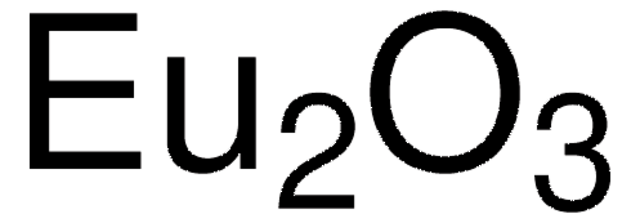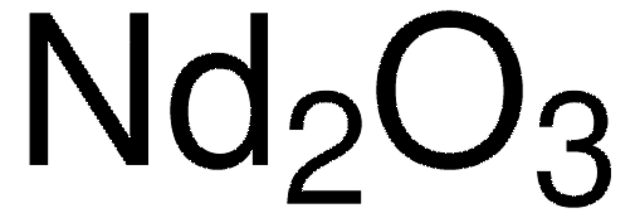204455
Strontium carbonate
99.995% trace metals basis
Synonyme(s) :
Strontianite
About This Item
Produits recommandés
Niveau de qualité
Essai
99.995% trace metals basis
Forme
powder and chunks
Impuretés
≤55.0 ppm Trace Metal Analysis
Pf
1494 °C (lit.)
Solubilité
dilute aqueous acid: slightly soluble(lit.)
Densité
3.7 g/mL at 25 °C (lit.)
Chaîne SMILES
[Sr++].[O-]C([O-])=O
InChI
1S/CH2O3.Sr/c2-1(3)4;/h(H2,2,3,4);/q;+2/p-2
Clé InChI
LEDMRZGFZIAGGB-UHFFFAOYSA-L
Vous recherchez des produits similaires ? Visite Guide de comparaison des produits
Application
- Strontium carbonate: Extensively used in the production of glazes in ceramics, where it acts as a flux and introduces strontium into the glaze for improved finish and durability. It is also crucial in the manufacture of ferrite magnets, providing the necessary strontium content to enhance magnetic properties. Additionally, its role in pyrotechnics is to contribute to the vibrant red hues seen in fireworks displays (Sigma-Aldrich, CAS 1633-05-2).
Code de la classe de stockage
13 - Non Combustible Solids
Classe de danger pour l'eau (WGK)
nwg
Point d'éclair (°F)
Not applicable
Point d'éclair (°C)
Not applicable
Équipement de protection individuelle
Eyeshields, Gloves, type N95 (US)
Faites votre choix parmi les versions les plus récentes :
Déjà en possession de ce produit ?
Retrouvez la documentation relative aux produits que vous avez récemment achetés dans la Bibliothèque de documents.
Les clients ont également consulté
Articles
Thermoelectric Performance of Perovskite-type Oxide Materials
The prevailing strategies for heat and electric-power production that rely on fossil and fission fuels are having a negative impact on the environment and on our living conditions.
Notre équipe de scientifiques dispose d'une expérience dans tous les secteurs de la recherche, notamment en sciences de la vie, science des matériaux, synthèse chimique, chromatographie, analyse et dans de nombreux autres domaines..
Contacter notre Service technique












